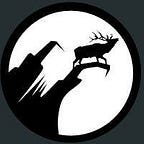Deer Hunting | Keeping a Hunting Journal Can Lead to Success
Powered by Stone Road Media
Some adults flinch at the thought of keeping a journal. No, we’re not talking about a middle school journal where students record their angry feelings (do kids even do that anymore?). We’re talking about a true deer hunting journal, where you can record observations of deer activity, weather conditions, harvests, etc. We’ll get to why this is all important in a little bit.
But to first help illustrate this point, try thinking back to last year alone — do you remember the temperature, wind speed/direction, and moon phase on any given hunt? What about where the deer were coming from and what their behavior was? Can you recall when you noticed the first scrape or rub of the season? I bet the details are already a little hazy, to say nothing about the years before that. If you keep a hunting journal, you can easily recall these details from even decades ago. But first, why would you need to know this information at some point in the future?
The biggest payoff in keeping a hunting journal is being able to pick out patterns over the years. Let’s say you notice in your records that deer movement, specifically mature buck movement, consistently peaks each year where you hunt when the wind is out of the northwest between 5 and 10 mph, with a lower-than-average temperature. You probably wouldn’t notice that if you were relying on memory alone. But if you have those records to confirm the trend over time, you’ll know to call in sick when those conditions pop up again in the future so you can get your butt in the woods!
The style and format of your hunting journal doesn’t matter — as long as you’ll consistently use it, it’s golden. Whether you decide to use a cheap notebook, a leather-bound journal, or even a spreadsheet on your computer, just make sure to keep it populated during the scouting and deer hunting season. I personally use a spreadsheet on the computer so I can easily filter out weather conditions, wind directions, etc. and see patterns emerge over the years. By selecting a northwest wind, for example, I can see what other conditions were common and what the deer activity was like at my stand locations. I simply take a small notebook into the woods with me to jot down field notes each day or each time I see a deer or deer sign. You could also just use your phone for this.
Similarly, you can keep observation records from your trail cameras in a separate section of your hunting journal. Instead of having to flip through thousands of old pictures from years past, you’ll have a nice summary of the dates, times, and basic conditions when deer were using that particular area of your property. Is this kind of behavior a little obsessive? Perhaps. But if it can make you a more successful deer hunter, what do you have to lose?
As far as the information to record in your deer hunting journal, the following categories should be all you need: date, temperature, wind speed and direction, conditions (e.g., sunny, overcast, snowing, etc.), stand or blind location, deer activity (e.g., walking, sparring, chasing does, etc.), deer direction of travel and approximate time, and any other applicable notes. Other optional columns could include moon phase, barometric pressure, monthly precipitation, or numbers of scrapes or rubs you find. It’s your journal — track whatever you want to track!
To summarize, it doesn’t matter what style of hunting journal you use, as long as you use it. To make getting started even easier, we recommend just recording dates and deer activity at first in a small notebook. Anybody can quickly write those few details down. As you get used to the habit, start recording more information. Soon it will become addicting, and you’ll want to record every little observation in the woods!
Even if you didn’t use your journal as a deer hunting tool, they are just plain fun to look back at. As we mentioned, it can sometimes be difficult to recall fine details a few hunting seasons ago. Everything is sweeter with a little nostalgia, and none more so than hunting traditions. When I’m too old to safely hunt in the back country any more, I’ll be able to look back at all the crazy trips I took and the crappy weather I sat through for the mere chance of harvesting a nice animal. My children will be able to use the same data I collected to see how hunting on the property has or hasn’t changed over the years. For that reason alone, I feel I owe it to my children and grandchildren to leave a legacy they can pick up when I’m gone.
Originally published at www.bonecollector.com on October 25, 2015.
